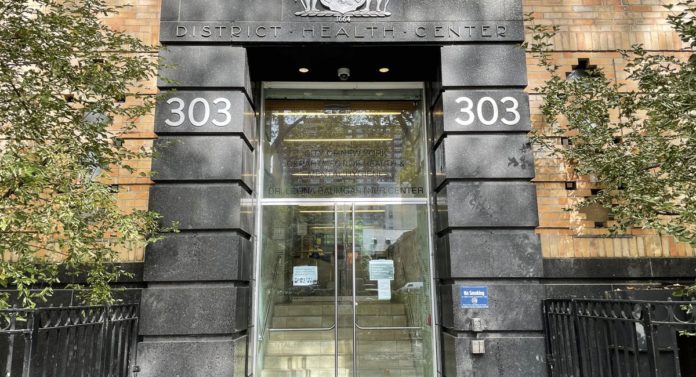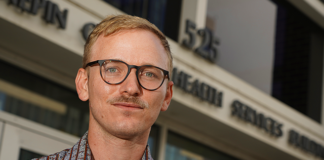
Monkeypox skin lesions can appear all over the body, but most have occurred on the genitals and anus, driving some to seek treatment at sexual health clinics that offer free and trusted services.
“It might be a herpes lesion, or it might be monkeypox, but it would make sense to go to a provider that is going to have, hopefully, all of those things on their radar,” said Joseph Osmundson, a molecular microbiologist at NYU who also serves as an LGBTQ advocate for public health policies.
After an initial bottleneck, there are now more testing options for monkeypox. Clinics and primary care facilities which collect specimens can now send them to commercial labs for processing. Earlier, only federal or local health officials could approve testing by non-government health providers. Those restrictions were recently eased. In addition to the city’s public health lab, there are at least five commercial labs that also offer monkeypox testing to New York City health care providers, according to the health department.
In addition to being free, advocates say the city’s sexual health clinics are a familiar and trusted resource within the gay community. They were considered an integral part of the city’s battle against HIV and AIDS as well as the destigmatization of STIs. The health department rebranded the facilities, which were once called STI clinics, as sexual health clinics several years ago.
“If you were a gay person and I said, ‘Find a free doctor in the city,’ the sexual health clinic is going to be your first thought,” Osmundson said.
According to a city employee familiar with the city’s clinics, the facilities are currently overwhelmed by patients, including those worried about monkeypox. (The person asked not to be named because they were not authorized to speak to the press.) In addition to staffing shortages, they said treating monkeypox requires more time, and in some cases, staffers at the clinics have had to turn away patients waiting in line before noon.
On Wednesday, there were around 16 people waiting outside the clinic in Chelsea. Most of them declined to be interviewed, although several said they were not seeking tests or treatment for monkeypox.
Luno Reginato, a 27-year-old downtown Manhattan resident who was not there for monkeypox testing, said he visits the clinic around every six months and that wait times have gotten considerably longer compared to his experience before the pandemic, when he said the wait time was around 15 minutes. That morning, he had already been waiting 20 minutes.
“It’s super important to have a resource like this for people who don’t have health insurance,” he said.
What happens without sexual health clinics
In June, Varma wrote a New York Times op-ed in which he argued that the U.S. was likely missing monkeypox cases because of a lack of clinics that specialize in sexual health, due to declines in government funding.
El-Sadr is currently working on a survey to determine how many monkeypox cases New York City may have been missed. She said she suspected there may have been mild cases in which the infected individual did not seek care and got better on their own.
She said she was not surprised to hear about the health department’s staffing challenges. Across the country, public health workers have reported feeling burned out by the pandemic and quit their jobs.
El-Sadr said, given the circumstances, the city had done a good job in expanding access to monkeypox testing by eliminating barriers for providers to send specimens to labs. That in turn, she predicted, has allowed for faster diagnoses.
During an unrelated press conference on Tuesday, Mayor Eric Adams said the city’s health commissioner, Dr. Ashwin Vasan, had not informed him of any staffing shortages.
Adams emphasized that monkeypox was being treated as a priority, although he focused his remarks on the delivery of monkeypox vaccinations.
The commissioner, Adams added, is getting “whatever he needs.”
Correction: A previous version of this story misstated the timeframe in which the clinics were closed.








